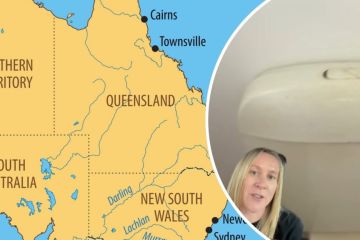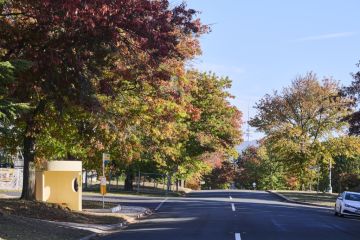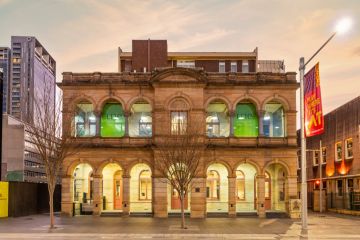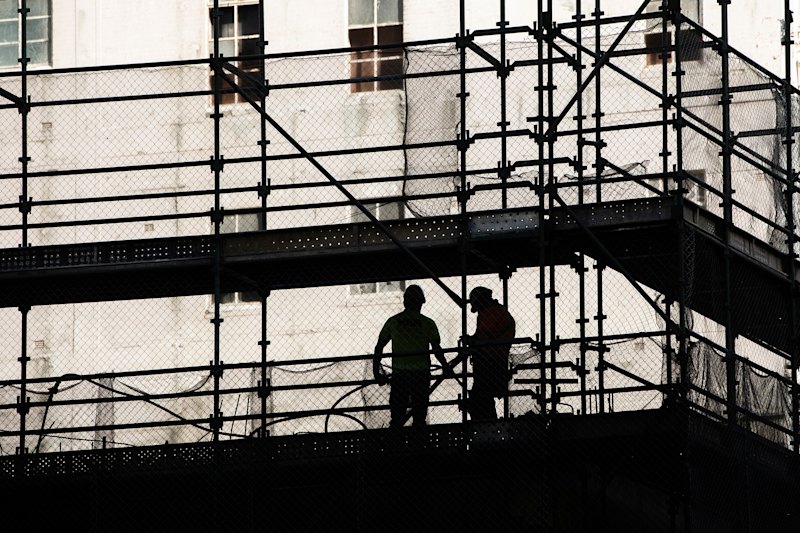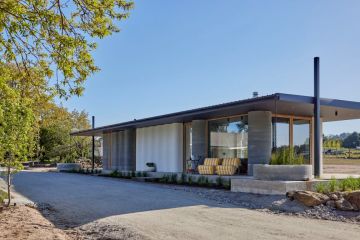When was the best buying in Australia's capital cities?

You may have heard that the key to gaining capital growth from your investments is about “time in the market”, not “timing the market”.
This wisdom suggests that the long-term trend in housing and stock markets tends to be up. Therefore, holding on to your investments for a long period will help you weather short-term fluctuations.
But to use another cliche; hindsight is 20/20. The release of the December 2018 Domain House Price Report reveals that time in the market has not served buyers equally in every city.
The following graphs show how much money would be made from selling the median value house or unit in each city at December 2018, based on when it was purchased over the past 15 years.
Although the Domain price series goes back more than 25 years for most cities, the past 15 years have seen some of the largest structural disruptions to parts of the Australian economy. These include the onset of the global financial crisis, a record low cash rate, the mining boom and the east-coast housing boom.
Historic values were adjusted for inflation so both the buying and selling points are represented in 2018 dollars. Therefore, the gains and losses reflect “real” returns, taking into account the effect of inflation.
Admittedly, without the aid of a time machine, this data crunch may not seem actionable. Many weren’t in a position to enter the market over the past 15 years (whether that’s because you didn’t have the money, or you were 11 years old).
And of course, capital gains are not everything. Buying at the bottom of the market might have meant paying higher mortgage rates. Looking only at capital gains also does not take into account other benefits of owning property – such as rental return, or getting to live in it.
But there are important lessons from looking at the past.
This data provides insight into the unique economic drivers of each state and territory that have led to different patterns in returns over time. It shows us that recognising structural shifts can be just as important as holding onto assets.
It potentially foreshadows future peaks and troughs in our cities, by highlighting what areas are starting to provide stronger returns.
Check out when you should have bought in:
Sydney
When it comes to capital gains in Sydney, those who bought 10 years ago might actually be better off than those who bought 15 years ago.
But those buyers had to be bold enough to purchase in the midst of the global financial crisis.
Despite recent declines in the Sydney housing market, the real gain in the median house price between September 2008 and December 2018 is $398,000. For units, the real gains are $238,000.
In the lead-up to the GFC, the NSW economy under-performed relative to other states and territories. In September 2008, the economy faltered further with the onset of the GFC.
Demand for goods and services within NSW contracted in the September 2008 quarter. In this climate, the nominal median Sydney house price sank to $540,000, while the median unit was down to $377,000.
But by 2011, there was a turnaround in economic performance. Growth in Gross State Product (the state and territory equivalent of GDP) rebounded to 2.4 per cent, up from 1.1 per cent in 2009.
Property prices boomed as inflation stayed low across Australia. From 2009, the rate of inflation has been 2.1 per cent a year, as opposed to a long-term historical average of 5.1 per cent.
This means buyers who picked up a Sydney property at the height of the GFC have not only seen high value increases, but inflation has not eroded these gains as significantly.
Those who bought more recently have not been as lucky, with prices returning to 2016 levels. Since the market peak in June 2017, the median sale price for Sydney houses declined $173,000 in real terms.
Melbourne
Those who bought houses in September 2004 are the best placed to sell in the current market, with a $364,000 capital gain on a typical priced house. For units the best buying was December 2005 with values up $110,000.
High returns hold fairly steady for the median house purchase before September 2006. Domain data suggests purchases before this point yields real increases above $350,000.
However, by June 2010, the gains more than halve to $159,000.
This is because 2010 brought a significant surge in house prices off the back of strong economic performance in Victoria, and six cash rate cuts between September 2008 and April 2009.
The unit market in particular performed so well during this period, that those who purchased the median Melbourne unit during 2010 would likely not realise real gains if they sold today.
As the Melbourne property market experienced another surge from September 2012, the return on both houses and units purchased after this point depleted rapidly.
Melbourne units purchased at the market peak (March 2018), have seen the sharpest real decline in value, down $36,000. For houses bought at the market peak in December 2017, the median sale price is down by about $92,000.
Brisbane
Unlike Sydney, Brisbane property has seen real declines since the GFC. The median Brisbane unit sale price has seen declines relative to every quarter since December 2006.
Those who purchased a house in September 2005 would be best placed to sell today, with the median sale price up $124,000.
The best time to buy a Brisbane unit was all the way back in March 2004, with gains of $56,000 in the median price.
But it was not time in the market that benefited buyers, which is evidenced by the losses incurred by purchasers just four years later. It was buying just before a once-in-a-lifetime mining boom.
Queensland annual growth in ABS gross state product averaged 4.5 per cent a year, driven by a mining boom through the expansion of the Chinese economy.
ABS export figures suggest the value of coal exports from Australia more than doubled from 2007 to 2008, to $46.6 billion.
Queensland’s mining sector expanded, and property prices responded, providing rapid capital gains for those who bought beforehand.
The end of the mining boom in Queensland saw the rapid slowdown of migration and investment into Queensland between 2010 and 2014.
This in turn created subdued performance in the Brisbane property market. However, the graph above represents a turnaround in the market, as price declines become less severe over time.
Perth
As with Brisbane, the Perth property market has been heavily impacted by the wider resource-based economy of the state.
Through the mining boom and bust, prices have settled to levels last seen in December 2005.
The median Perth house price has increased most since March 2004, up $133,000. However, those who purchased at the median level just four years later in December 2007 saw the largest real declines – down $162,000.
Interestingly, while the declines are large, they are not as large as the declines seen in the Sydney market from the June 2017 peak.
In units, the real return based on the median sale price ranges from $90,000 at June 2004, to a loss of $102,000 from a purchase at June 2014.
Now that the Perth economy and housing market is showing signs of a recovery, houses purchased today may start seeing gains in value.
The real change in median house price purchases between the September and December quarters of 2018 was a relatively small decline of just $3000.
Darwin
Perth and Darwin dwellings show similar patterns in changes to the median house and unit returns over time. However, the depths of decline over the last 15 years have been more severe in Darwin.
This is because the NT more broadly attracts a more mobile workforce, creating high fluctuations in population. As a result, property demand and prices see fluctuations.
The mining-induced peak of the Darwin house market was in March 2011. When taking inflation into account, the median house price rose to $744,000.
Since the March 2011 quarter, the median house price fell $229,000 – the most severe fall of the capital city markets.
The same is true of units, which have declined $197,000 since the peak in March 2015.
For both houses and units, the peak return based on median price data stems from purchases well before the mining boom, in March 2004.
Adelaide
When it comes to houses in Adelaide it is very much a ‘time in market’ investment. The highest gains come from purchases at March 2004 for both houses ($144,000) and units ($64,000).
Adelaide houses have largely seen slow and steady capital growth. The housing market has not been as attractive to investors, with ABS census data suggesting approximately 80 per cent of the house market is owner-occupied.
Therefore, a home owner who entered the housing market at any point in the past 15 years has generally seen a real gain in value from a sale in the current market environment.
The exception is 2018, where growth in the Adelaide house market has not kept up with inflation.
The biggest loss on Adelaide houses was relatively small, with a decline of $4000 from June 2010 to December 2018.
The recent slowdown in growth of the Adelaide housing market may be attributed to the generally subdued lending environment, and continued uncertainty of job creation in the SA economy.
The unit market has not been as steady over time, with real value declines of $40,000 for those who purchased in June 2010. It may be that in an affordable, low-density market, unit stock may not have been as desirable as houses over time.
Employment growth, particularly full-time employment growth, has been fairly strong in 2018 across SA, peaking at an annual growth rate of 2.5 per cent at April 2018.
Employment growth may flow into stronger demand for Adelaide property as jobs and wages lift. Adelaide units have seen modest increases over 2018.
Canberra
Canberra has had the most remarkable divergence in returns between house and unit stock.
The median Canberra house price from anywhere between 2004 and 2017 would yield an increase if sold in the current market.
The highest increase is from a purchase at June 2005, where the real increase in price is $204,000.
The median unit price over the past 15 years has largely seen declines to December 2018.
The largest of these price falls would be from a purchase date of December 2010, when unit prices peaked in real terms at $501,000.
Since this time, a relatively high supply of unit stock may have contributed to declines in unit prices, which sat at $413,000 in December 2018.
ABS building activity data shows that unit completions largely out-paced house completions in the ACT from 2011. Unit completions have since averaged approximately 2800 a year, compared with an average 1485 house completions.
The most a Canberra unit has made from the past 15 years if sold today is just $11,000 from September 2004.
Part of the increase in the median Canberra house price over time was possibly due to the demolition of housing stock contaminated with asbestos from 2014. The initiative saw more than 1000 houses demolished, and rebuilt at a premium.
Those purchasing houses between September 2014 and December 2017 did so in a rising market, before prices plateaued over 2018. Therefore, house purchases in 2018 have not seen median house prices outpace inflation.
Hobart
Selling the typical house in Hobart today would likely leave the seller better off, no matter when they purchased the property over the past 15 years.
From a humble house price of $214,000 in March 2004, the median Hobart sale price is now approximately $480,000. Taking inflation into account, the gains on this holding period are $175,000.
Units also have maximum returns from a property acquired at March 2004, which would see real returns of $85,000 if sold today.
Hobart was not always a desirable market. In September 2012, prices approached a trough off the back of weak tourism, public spending and construction.
This was partly related to the peak of the mining boom, which saw construction projects winding down, and a high Australian dollar deterring international tourism.
Domain’s median price series suggests a house purchased at this trough has since increased by $137,000.
Between September 2016 and December 2018, the median Hobart house price increased 34 per cent, while units increased 33 per cent.
In recent years, there have been no shortage of factors cited as causing growth in the Hobart market, from tourism to rising temperatures on the mainland.
In addition to demand factors, the city is geographically constrained and, in recent years, the supply of property has not kept up with population increases.
However, growth in Hobart dwelling prices is starting to ease, as tighter lending conditions and subdued demand will likely see the Hobart prices stagnate over 2019.
Units have already seen a fall in values over 2018. Those who purchased at June 2018 have already seen a real decline of $23,000.
Ultimately, there will be many variations on the capital gains of an individual property. But median price analysis suggest for most cities, economic structural shifts in the last 15 years have challenged the time in the market rule.
The global financial crisis, a once-in-a-lifetime mining boom and record-low interest rates have created different experiences of loss and opportunity from city to city.
We recommend
We thought you might like
States
Capital Cities
Capital Cities - Rentals
Popular Areas
Allhomes
More
